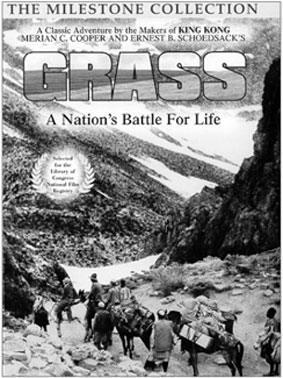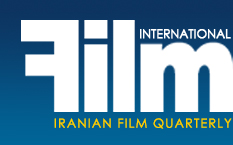|
Documentary cinema in Iran
A Paradise for Documentarians
by Massoud Mehrabi
|
|

The Iranian documentary cinema is as old as the history of the Iranian cinema. Documentary films marked the beginning of the Iranian cinema both in terms of film screening at new theaters, and early production experiences. The history of the Iranian documentary cinema starts with a trip by the Qajar king, Mozaffar-ed-Din Shah, to France (1853-1906). He visited that country in 1900 and saw a “cinematograph” among entertainment facilities. He loved that magical device and ordered “Mirza Ebrahim Khan Akkasbashi” (the Royal Court photographer) to buy it and shoot some footage with it. The first film shot with that device depicted the “festival of flowers” carnival which has been described by Mozaffar-ed-din Shah in his memoirs as such: “Akkasbashi is shooting festival of flowers and ladies who are riding in coaches and tossing flowers.” The event was shot in Ostend, Belgium, on August 15, 1900. Other films were also shot during the same trip a collection of which is currently being kept at the archives of the state television. The collection includes such scenes: Mozaffar-ed-din Shah, sitting in a moving coach, looks into the camera while a crowd of men and women clad in neat clothes are standing in an irregular manner on both sides of the road; the king is seen at an exhibition (or museum?); he is aboard a train; is among the crowd while his bodyguards watch over him; is standing at a place like a park and is looking around. Therefore, the first documentary films of the Iranian cinema were shot five years after the onset of documentary cinema in the world (1895). Further in that trip, the second documentary film was shot: “The French army marching in front of Mozaffar-ed-din Shah.”
Back in Iran, the Shah ordered various scenes to be shot in order “to be shown to the servants.” Akkasbashi started shooting scenes which should be considered the first instances of documentary films in “history of the Iranian cinema” within its first 20-year period. The following is a list of what remains of those footage shots:
1. The servants at the Royal Court have horn-like caps on and while riding on donkeys, hit one another with sticks. One of them calls on others to be calm, but the brawl continues;
2. Two dwarfs are seated and while jesting, fight with each other. Three people enter and try to calm them down, but they also get engaged in the fight. A man arrives carrying a gun, but they take the gun away;
3. A few people are fighting and a black “servant” is seen in that scene;
4. A person is being bastinadoed;
5. Three people are seated around a table. One of them has Arabic clothes on. A cage is seen with a bird inside. Few people arrive and start fighting with the man in Arabic clothes;
6. Mozaffar-ed-din Shah arrives and sits on a chair. He looks into the camera. Then he gets up and helps to prepare the camera. A man carrying a gun is standing in attention;
7. The Shah and his entourage are moving about in hunting grounds. The picture is then cut to two different views which shows them in different places;
8. The Shah arrives and prepares a gun to shoot. Then he goes toward a telescope and tests it;
9. People are moving around Shams-ol-Emareh (an area behind the Royal Palace);
10. Inside the palace Shah is moving ahead and bodyguards follow him. Servants are moving behind them;
11. Horse riders go through one of Tehran’s gates;
12. Hunting dogs of the Royal Court are eating and drinking water;
13. A clown is entertaining the audience;
14. Pictures from the interior architecture of the palace.
Apart from these 14 footages, there are five more footages which some experts have doubts about them having been shot by Akkasbashi. They include:
1. A freighter starts moving from Anzali port, a Caspian Sea port in north Iran;
2. Soldiers marching in the Royal Palace;
3. Miscellaneous pictures showing people in Tehran streets and bazaar;
4. Companies of the Iranian army are marching while people look at them from behind a fence;
5. Veiled women are passing by Sepahsalar Mosque in Tehran. They cover their faces when they see the camera.
•
After Mirza Ebrahim Khan Akkasbashi, Khan Baba Mo’tazedi was the first Iranian to make documentary films at a professional level (according to those days’ standards). He went to study in France under Ahmad Shah Qajar (1914-1925) and returned to Iran in 1920 carrying a Gaumont camera, a projector, and some film. His first experiences included shooting footages of his own family as well as “Mohammad Hassan Mirza” the crown prince of Ahmad Shah. His professional career continued by filming Reza Shah Pahlavi (an army commander who staged a coup d’état against Ahmad Shah and replaced him) taking the oath at the Assembly of Founders followed by swearing-in ceremony at the National Consultative Assembly (December 1925). Before long, he was recognized as the most professional cinematographer in Iran. Crowning ceremony at Golestan Palace, beginning of north-south railroad in Iran, Constitutional celebrations at the National Consultative Assembly, army marches, inauguration ceremony of scout organization, inauguration ceremony of a spinning plant, and inauguration ceremony of the first radio station in Tehran were among his famous works which were then screened at Tehran theaters and military training centers. Given the subject of Mo’tazedi’s films, one can claim that documentary cinema in Iran took a propaganda turn in the second twenty years of its evolution (1920-1940); that trend was strengthened in later years and constituted the mainstream of documentary cinema in Iran.
SUBSCRIBE
[Page: 82]
|
|
|
|
|
President & Publisher
Massoud Mehrabi
Editors:
Sohrab Soori
Translators:
Sohrab Soori
Behrouz Tourani
Zohreh Khatibi
Saeed Khamoush
Contributors
Shahzad Rahmati
Saeed Ghotbizadeh
Advertisements
Mohammad Mohammadian
Art Director
Babak Kassiri
Ad Designers
Amir Kheirandish
Hossein Kheirandish
Cover Design
Alireza Amakchi
Correspondents
E.Emrani & M. Behraznia (Germany)
Mohammad Haghighat (France)
A. Movahed & M. Amini (Italy)
Robert Richter (Switzerland)
F. Shafaghi (Canada)
B. Pakzad (UAE)
H. Rasti (Japan)
Print Supervisors
Shad-Rang
Noghreh-Abi
Gol-Naghsh
Subscription & Advertising Sales
Address: 10, Sam St., Hafez Ave., TEHRAN, IRAN
Phone: +98 21 66722444
Fax: +98 21 66718871
info@film-magazine.com
Copyright: Film International
© All rights reserved,
2023, Film International
Quarterly Magazine (ISSN 1021-6510)
Editorial Office: 5th Floor, No. 12
Sam St., Hafez Ave., Tehran 11389, Iran
*
All articles represent views of their
authors and not necessarily
those of the editors
|
|
|

